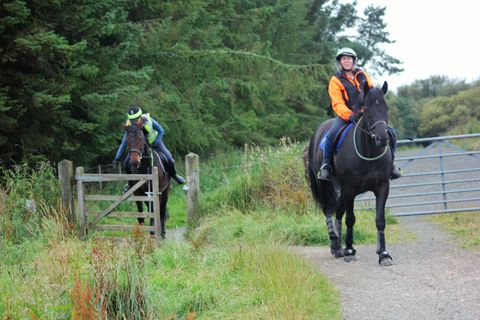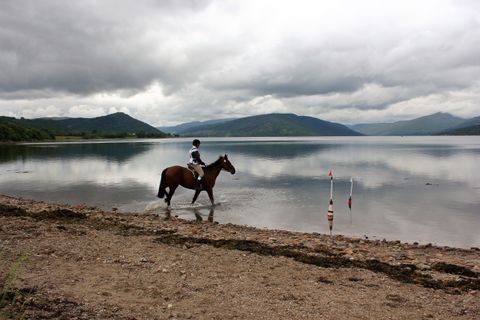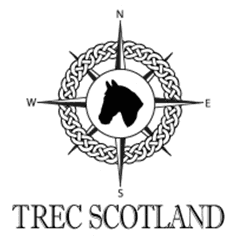ABOUT TREC
SO WHAT IS TREC?
TREC is a competition for leisure riders that combines a range of activities including trail riding, jumping and flatwork rather than focussing on one particular discipline. It tests the riders’ ability to read and follow a map; their degree of control and riding ability; and their aptitude to deal with the obstacles and problems that may be encountered when riding in the countryside.
It is open to horses and riders of all ages and abilities.
There are 4 levels of competition starting at Level 1 and competitors may compete as either individuals or in a pair. The length and complexity of the Orienteering stage and the speed and the difficulty of the PTV stage represent the difference in the levels.
The competition is conducted in 3 phases, usually over 2 days. The phases are - the POR (Orienteering), the MA (Control of Paces) and the PTV (Cross country obstacles).
Elimination from any one of the phases does not eliminate a competitor from the competition.
The POR
Riders follow a predetermined route, which is copied by the competitors from a master map. The route is split into sections with unknown checkpoints along the route and different speeds are set for each of these. This is not a race, however, and is conducted mainly in walk and trot.
The MA (Control of Paces)
Demonstrates the riders’ degree of influence over the horse in a canter and walk. The purpose being that the horse should travel as slowly in a canter and as fast in a walk as possible without changing pace over a course of 150m in length and 2m – 2.2m in width.
The PTV
A timed Cross Country Trials course, up to 5km in length, involving 16 natural or simulated obstacles, some tackled mounted, some on foot. Any obstacle may be missed; the competitor is not eliminated but will just lose the points available for that obstacle. Jumps may be included, but these are not high ranging from 2’ at Level 1 to 3’3” at Level 4.


TREC has many intended benefits for the horse and rider, developing calmness, versatility and responsibility in the horse and confidence, independence and development for the rider.
However the main object of the whole competition is to enjoy yourself and have fun with your horse.
